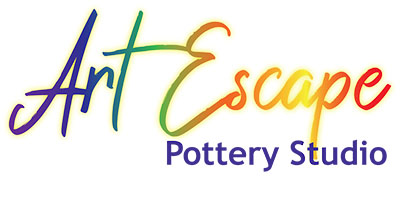How Learning Pottery Fuels a Lifelong Journey of Exploration
Pottery is more than just an art form – it is a gateway to endless curiosity and discovery. For students embarking on the journey of learning pottery, the process of creating with clay ignites a spark of curiosity that propels them on a lifelong quest for knowledge and inspiration. Let’s delve into how learning pottery can fuel a student’s curiosity with compelling examples.
Exploring Cultural Traditions: As students delve into the world of pottery, they encounter a rich tapestry of cultural traditions and techniques from around the globe. From the delicate porcelain of China to the vibrant majolica of Spain, each pottery tradition tells a story of history, heritage, and craftsmanship. Students are inspired to explore the cultural nuances of pottery-making, fostering a deeper appreciation for diverse artistic expressions.
Experimenting with Materials: Pottery offers students a playground for experimentation, where they can explore the properties of different clays, glazes, and firing techniques. Through trial and error, students discover the unique characteristics of each material, unlocking new possibilities for creative expression. Whether it’s testing the limits of a high-fire stoneware or experimenting with alternative firing methods like raku, pottery fuels a spirit of curiosity and innovation.
Understanding Scientific Principles: Pottery is a blend of art and science, requiring students to understand the principles of chemistry, physics, and geology. As students delve into the technical aspects of pottery-making, they gain insights into the molecular structure of clay, the behavior of glazes under varying temperatures, and the mechanics of the pottery wheel. This interdisciplinary approach sparks curiosity about the natural world and its underlying processes.
Studying Art History: Pottery is deeply rooted in art history, with millennia of artistic traditions to explore and appreciate. From ancient civilizations to contemporary movements, pottery reflects the aesthetic, cultural, and social contexts of its time. Students delve into the annals of art history, studying the works of master potters and tracing the evolution of pottery styles and techniques. Each historical period offers a new lens through which to view pottery, fueling a curiosity for the artistry and innovation of past generations.
Connecting with Nature: Pottery connects students with the earthy origins of their craft, fostering a deep appreciation for the natural world. As students work with clay sourced from the earth, they develop a tactile connection to the raw materials of their craft. This connection inspires curiosity about the geological processes that shape the earth’s crust, the mineral composition of different clays, and the environmental impact of pottery-making practices.
Exploring Functional Design: Pottery combines form and function, challenging students to explore the practical applications of their creations. As students design and create functional pottery pieces, they delve into the principles of ergonomics, usability, and aesthetics. Each piece presents a new design challenge, sparking curiosity about how form can enhance function and vice versa.
Navigating Creative Challenges: Pottery is a journey of creative problem-solving, requiring students to navigate challenges and setbacks along the way. From centering clay on the wheel to troubleshooting glaze defects, students encounter a myriad of obstacles that fuel their curiosity and resilience. Each challenge presents an opportunity for growth and learning, inspiring students to explore new techniques, seek advice from peers and mentors, and push the boundaries of their creativity.
Building Community: Pottery fosters a sense of community among students, creating opportunities for collaboration, camaraderie, and shared learning. As students gather in the pottery studio, they exchange ideas, offer feedback, and support one another on their artistic journeys. This sense of community fuels a curiosity for diverse perspectives and approaches to pottery-making, enriching the learning experience for all involved.
Conclusion: Learning pottery is not just about mastering a craft – it’s about embracing a lifelong journey of curiosity and exploration. From cultural traditions to scientific principles, pottery fuels a sense of wonder and inquiry that transcends the studio walls. As students continue on their pottery journey, they embark on a quest for knowledge, inspiration, and creative fulfillment that knows no bounds. So, let us celebrate the transformative power of pottery to ignite the flame of curiosity and fuel a lifelong passion for learning and discovery.

